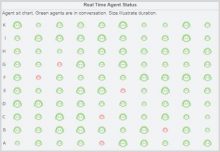The era of big data is upon us, but mining it and making sense of it doesn’t merely happen. In fact, without a strategy, you could be grasping at straws and finding that proverbial needle could be a matter of sheer luck. Success with big data involves having the right keys. Below are the most important ones to put on your keychain:
1. Clear Goals – You need to understand what you want to achieve. What are you looking for and why? Having a goal will guide you from the beginning. For example, if your goal is to understand how weather patterns affect sales, then you’ll know what type of data to collect. Without that big data strategy, your haystack is impossibly huge — there’s just so much data! With it, you know where to begin your hunt.
2. Tools – Miners use a variety of tools to extract minerals from mines; they don’t simply scratch at rocks with their fingernails. Tools make the job possible; the right tools make the job more efficient and reliable. When mining big data for nuggets, you need the right tools for the job. In this case, the best tools for the job are business intelligence software, analytics, and data visualizations.
3. Talent – Tools alone can’t accomplish your goal. They need to be placed in the hands of people skilled in using them. In the not-so-distant past, big data initiatives required extensive input from data scientists and IT personnel. Even running a custom report usually meant consulting with someone from the IT department. Fortunately, user-friendly business intelligence tools are available. Drag-and-drop components and intuitive data visualizations allow end-users to create ad hoc reports based on any number of sources and make sense of the findings. With a bit of training, the right tools, and a clear goal, it becomes possible for key players in your organization to become successful with big data without having to have a data scientist on call.
4. Appropriate Permissions – Finally, an important key to success with big data involves setting appropriate permissions so that those who need access to sensitive data can make sense of it while those that do not are properly restricted from accessing it.
Works Cited:
1. Smart Data Collective, “5 Keys to Successfully Using Big Data,” – http://smartdatacollective.com/rick-delgado/235426/5-keys-successfully-using-big-data



